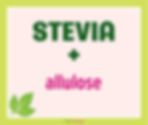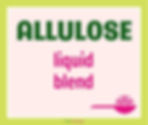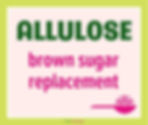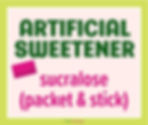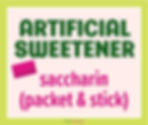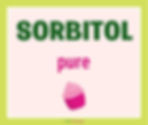SORTING THE SWEETENER AISLE
This is your guide to making sense of the sweetener chaos. With thousands of products on shelves—and more launching all the time—this page gives you a bird’s-eye view of all the sweeteners available in stores. To help you navigate the choices with ease, I've sorted products into three simple categories. Click to jump straight to the type of sweetener you want to explore.
PICK YOUR ZERO-CALORIE SWEETENER
Zero-Calorie Sweeteners can be natural, synthetic, or artificial, all providing fewer than 5 calories per serving. Both natural and synthetic options are plant-derived. Natural sweeteners include stevia and monk fruit, which are directly extracted from plants. Synthetic sweeteners, like allulose and erythritol, occur in nature but are commercially produced through enzymatic or fermentation processes. Artificial sweeteners—such as sucralose, aspartame, and saccharin—are entirely man-made and do not exist in nature.
PICK YOUR REDUCED-CALORIE SWEETENER
Reduced-Calorie Sweeteners provide 25 to 75% fewer calories than sugar, with 0.4 to 3 calories per gram (or 1.2 to 12 calories per teaspoon). They fall into two groups: Sugar Blends and Low-Digestible Carbohydrates. Sugar blends are typically not sugar-free, while low digestible carbs are sugar-free. This second group includes polyols (sugar alcohols), sweet fibers, and rare sugars.
Low-Digestible Sweeteners
25 - 75% fewer calories than sugar.
Sugar-free.
Sugar Blends
50 - 75% fewer calories than the sugar or syrup they replace.
Contain sugars or maltodextrin.
Not calorie-free. Not sugar-free.
PICK YOUR CALORIC SWEETENER
Caloric sweeteners, also known as sugars, provide 4 calories per gram. This category includes not only table sugar but also honey, maple syrup, agave nectar, and over 70 other sweeteners is stores. Chemically, they consist of two main components—sugar and water. Solid sweeteners contain over 90% sugar and provide 16 calories per teaspoon, while liquids have more than 50% sugar and 22 calories per teaspoon.
WhatSugar™ is reader-supported.
When you buy through Amazon links, this site may earn an affiliate commission.
A one-woman business relying on Amazon affiliate commission to avoid ads.
The list above is not intended to endorse, advertise, or recommend products.
We present this listing simply as a service to our readers.





